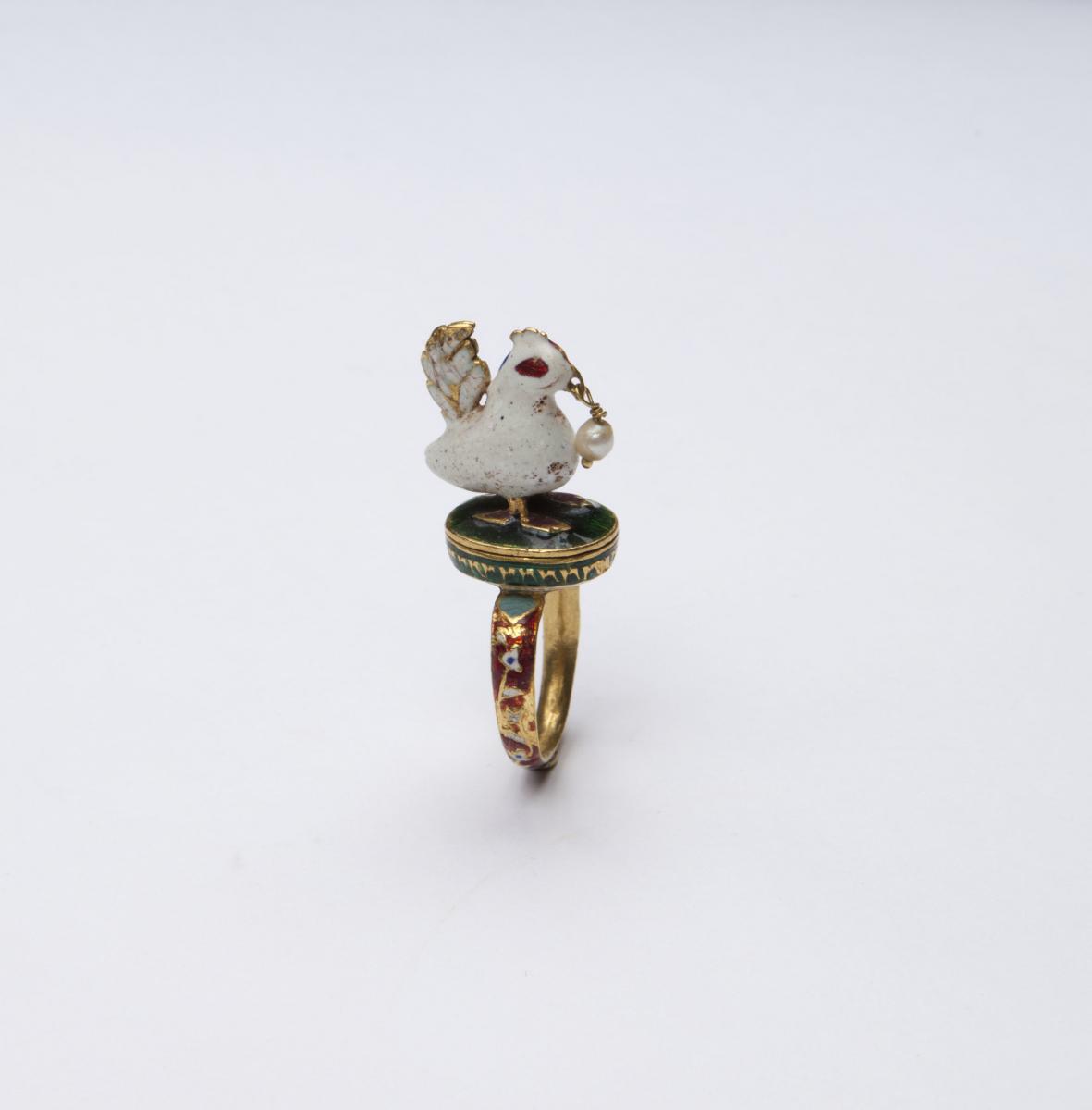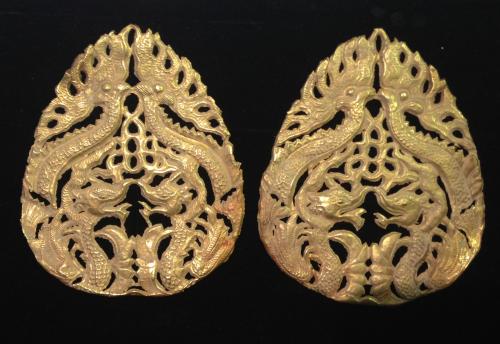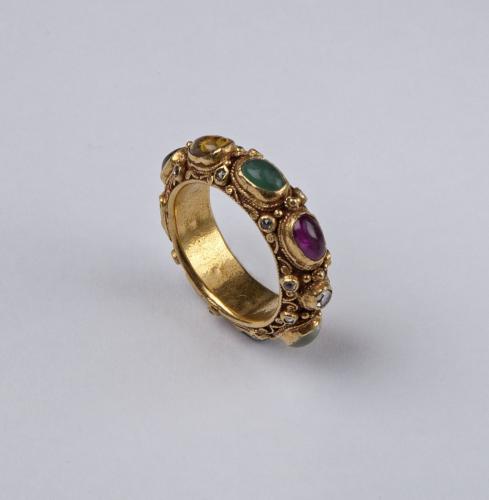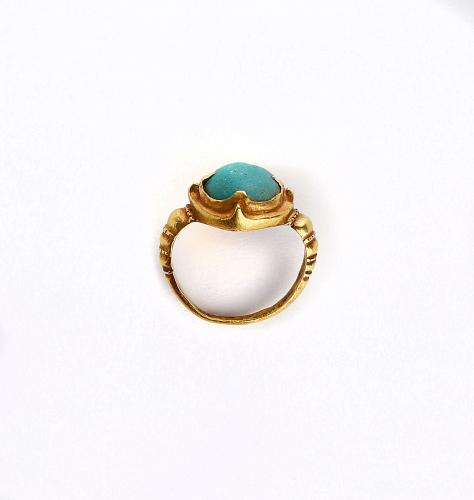

This object is eligible for a Certificate of BADA Provenance
The BADA Standard
- Since 1918, BADA has been the leading association for the antiques and fine art trade
- Members are elected for their knowledge, integrity and quality of stock
- Our clients are protected by BADA’s code of conduct
- Our dealers’ membership is reviewed and renewed annually
- Bada.org is a non-profit site: clients deal directly with members and they pay no hidden fees
Mughal, India
17 – 18th Century
Height: approx. 3cm
A gold ring depicting a rooster with a Basra pearl hanging from its beak, is enameled with white opaque enamel and red translucent eyes.
The bird stands on a green enameled base, the shank in lal zaminenamel. The top is screwed onto the base leaving a small concealed place where potions could have been hidden.
Provenance
Private Collection: Belgium
Literature
This type of jewellery was imported to Europe and it may have influenced renaissance European jewellery. Vasco da Gama discovered the sea route to India in 1498; the ports of Lisbon and Antwerp at that stage controlled the India trade.
It is recorded that an Indian necklace was amongst the gifts given to the Virgin of Belem by Vasco da Gama on his return from his first voyage to India. Indian jewellery is found and recorded in Augsburg in 1551 and in the auction of Rembrandt's collection in 1656.
Examples in the Robert Lehman Collection in the Metropolitan Museum New York show Venus and Amor astride a sea monster which is clearly a Makara as depicted in Indian jewellery and is dated c.1580 and in the Kunstbibliothek Berlin, Staatliche Museen Preussischer Kulturbesitz is an elephant and pagoda with the monogram of Frederik 11 of Denmark and Sophia of Mecklenburg dated 1572.
There are many cross- overs, which lead one to speculate that these exotic jewels had a remarkable effect on designs in Europe and could well be dated, earlier.
Exhibited and Published: Een Streling voor het Oog Indische Mogoljuwelen van de 18de en de 19de eeuw. Provinciaal Diamantmuseum- Antwerpen, 1997
Condition report
excellentThe BADA Standard
- Since 1918, BADA has been the leading association for the antiques and fine art trade
- Members are elected for their knowledge, integrity and quality of stock
- Our clients are protected by BADA’s code of conduct
- Our dealers’ membership is reviewed and renewed annually
- Bada.org is a non-profit site: clients deal directly with members and they pay no hidden fees




